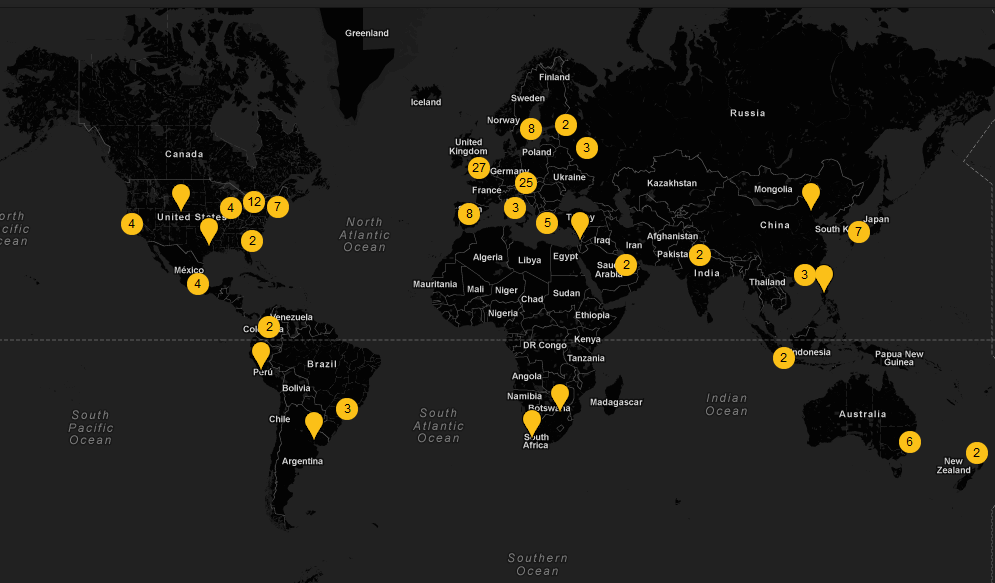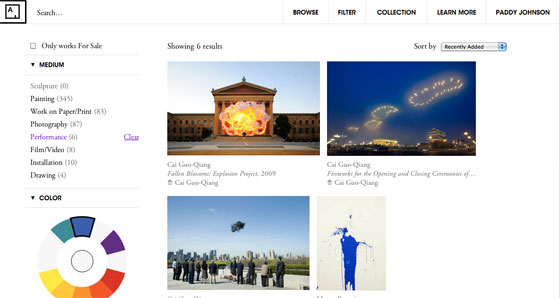Cataloging is one of the most labor intensive responsibilities for collections management, requiring the expertise of many art-specialists. It typically is also the most encountered feature of a collection, especially when the actual object is restricted with respect to: preservation, accessibility, and engagement. Digitizing collections challenges traditional paradigms for audience interaction, and one private organization leading the progression is ARTMYN.
#TBT: The Web-Based Arts Experience
When discussing the future of the arts, many professionals and studies have stated that the manner in which audiences consume arts and culture is rapidly changing--and has already changed. The Internet has been the most notable new space for consuming culture, providing both opportunities and challenges through widespread and instant information sharing. Over the past several years, AMT Lab has documented the various web-based arts experiences that are becoming readily available--usually including lessons and best practices that managers can take away for their own practice. This week’s TBT rounds them up into a user-friendly toolbox of online arts experiences of various artistic mediums.
The Google Art Project and Art.sy: Exploration Engines for Art
The complexity and depth of the world’s art and culture is incredible and incredibly incomprehensible. Incredible because it evades definition and is relentlessly dynamic. Incomprehensible because the individual knowledge, time, and resources required to explore this cultural infinity are all too finite. Thus in this ever expanding universe, it is all too easy to gravitate towards the black hole of ignorance. But fear not, recent developments in technology are here to help steer us away from that ill-fated course. The upgrade of the Google Art Project and the launch of Art.sy are helping us understand our cultural universe, one art work at a time. With Google’s integrated documentation of the world’s museums, our artistic past is both nearer and clearer (literally, with a 7 billion pixel Rembrandt!). And Art.sy’s role as a “dynamic inventory” of emerging artists is an opportunity to discover contemporary art without being at the center of the artistic universe (New York or London).
The second phase of the Google Art Project has seen a massive expansion in the number of museums available on view. “Since last year, the Art Project has expanded its reach: 151 museums are now partners (compared to 17 in V1) providing over 30,000 artworks, from 40 countries (compared to 9 countries last year).”
From the National Gallery of Modern Art in New Delhi to the Getty Museum in Los Angeles, a visitor can experience a significant portion of the world as seen through objects, artifacts, paintings, and sculptures. Its new features include the ability to create your own collections and place them in personal “galleries”. The site also includes an entire section on ways to educate and be educated! For the initiated visitor, it is an invaluable opportunity for art historical exploration!
In its broader implications, the Art Project is a window into national identities as created through heritage and can be viewed as a vehicle for cultural diplomacy. This notion may seem overly ambitious, given the sites’ hyper-virtual immersion in a country’s artistic wealth and apparent disregard of chronology. But it exists nonetheless, as a weaker current that may invoke some to pursue additional research, and even create travel plans!
Additionally, the countries represented benefit from showcasing the wealth of their museum’s collections on an integrated domain, alongside world-renowned museums such as the Met. In essence, the Google Art Project acts as a virtual art fair for the world’s museums. It can either be surveyed at a harried pace or explored with deliberation. Either way, you get to collect works and create galleries for no cost at all!
In a similar vein to the Google Art Project, Art.sy is helping the world discover contemporary art, a category that often transcends national boundaries and is increasingly difficult to keep up with, let alone understand! With Art.sy the difficulties of “discovering fine art” are eased with the development of the Art Genome Project, “an ongoing study of the characteristics that distinguish and connect works of art.”
The website recently launched its beta version and some of its remarkable features were highlighted by the lucky few who were given access. Essentially, Art.sy allows users to discover new artists and works based on a set of 800 characteristics or genes that are assigned to each work of art. Given a user’s interest in a work of art and the underlying genes that are encompassed within, it suggests additional work that may interest them. Users can also choose to follow an artist or a gallery and of course, contact the gallery if they are interested in making a purchase.
A review by BetaBeat praised the site for its ability to lead an average art appreciator “to artists like Sherin Guirguis, a young Egyptian artist whose abstract paintings resemble fractals and eyeballs.” At the same time, it was criticized for only having secured partnerships with the leading galleries of the world and effectively limiting the art on view. Art.sy also retains an air of exclusivity, one that it may carry with it into the future.
Nevertheless, it would be remiss not to give the unique and brilliant workings of Art.sy a try.
In effect, both Art.sy and the Google Art Project are innovative discovery engines for art. The differentiation lies in that the former knows where you are headed even as you might not. The latter, in contrast, lets you meander your way to a destination unknown, an artwork unseen.









